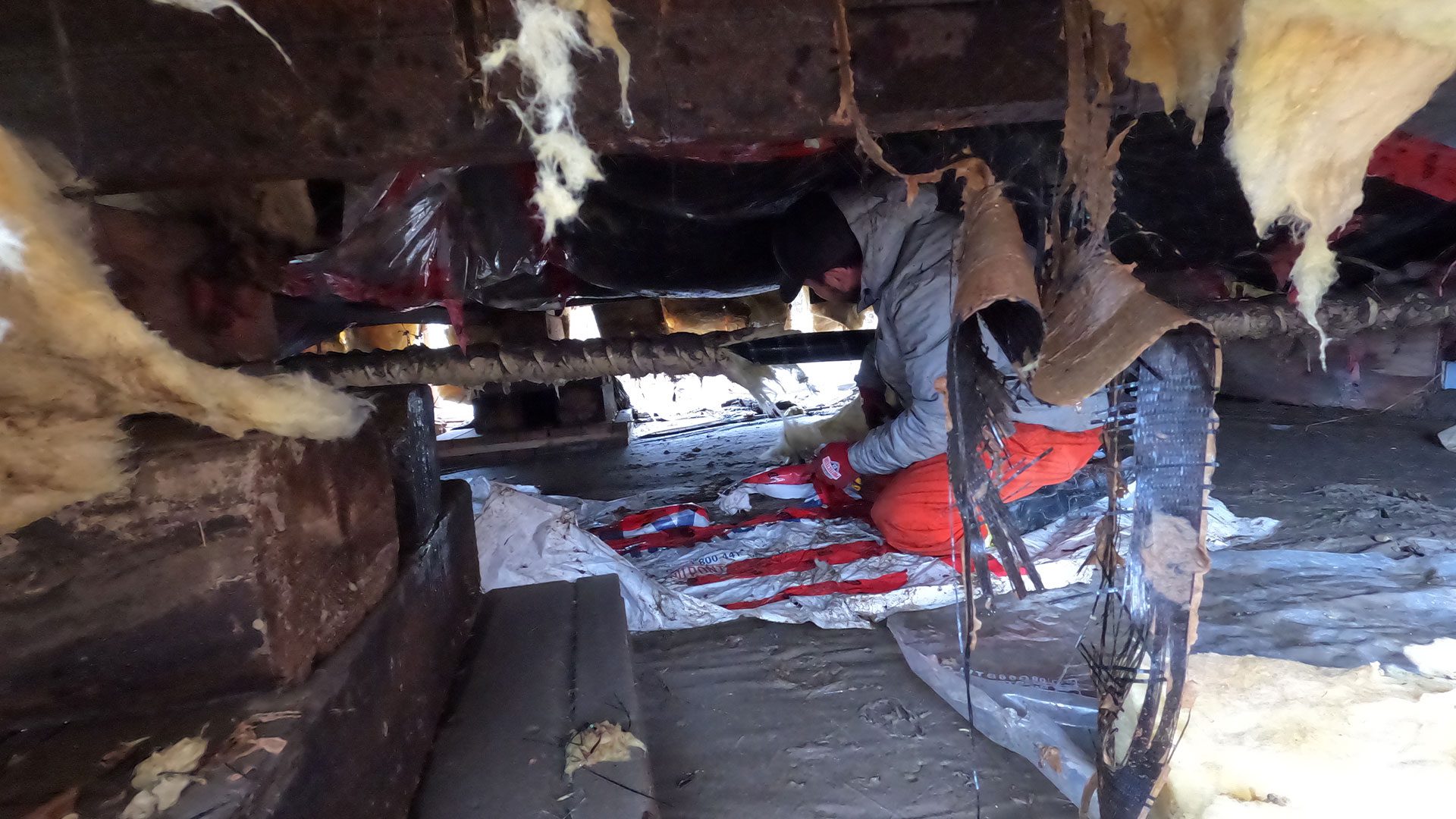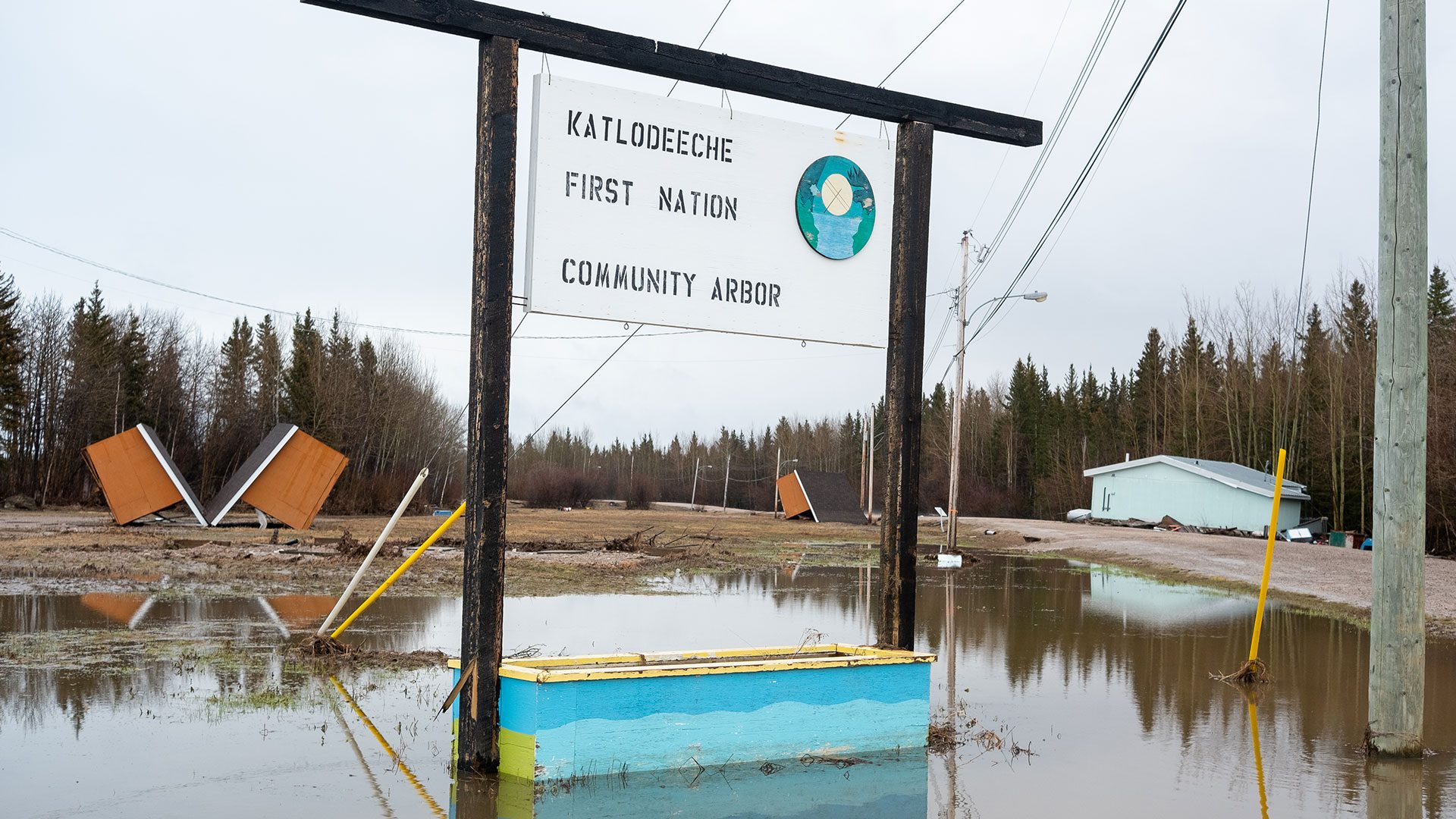Jamie Mcpherson knew time was of the essence to remove the water-sodden insulation from the underbelly of his home before mold set in.
Over the last week, he pulled 12 to 14-hour days and dealt with the destruction from unprecedented ice jams and high water flooding along the Hay River in the Northwest Territories.
“I’m just overwhelmed, I don’t have anywhere to live, I’m staying in my camper uptown at my grandma’s house,” Mcpherson said. “I have a little bit of insurance, but I don’t think anyone down here can qualify through insurance because we are in the flood zone.”
If it wasn’t for the berm, houses like Mcpherson’s in West Channel, West Point First Nation probably wouldn’t be left standing.
Spring flooding along the river in May led to a community-wide evacuation of roughly 4,000 residents.
“Water came in from this way and it smashed into my skirting, went into my house, and completely filled my insulation and it’s completely soaked. It filled up my water tank and pushed my fuel tank,” he said.

While folks in all the affected areas have been cleared to return home – cleaning, recovering, and repairing from a natural disaster of this magnitude will take months if not years.
“I love where I live, but I’m hoping the town will prepare next year, maybe they will widen the banks with heavy equipment at the mouth of the river, or blasting,” Mcpherson said.
Across the road, Jesse Mackie assessed the damage at his dad’s house.
Amid the smell of fuel spills and debris, he considered his family one of the fortunate ones only facing plumbing and insulation rebuilds.
“Some people will have to definitely move, sell their land,” Mackie said. “I had a lot of anxiety on Friday when he called me and told me he evacuated.”
As of May 26, more than 230 residents have signed up for the disaster assistance service according to the territorial government’s minister of Community Affairs.
Minister Shane Thompson announced the figure in the Legislative Assembly on May 26, and stated at least 100 homes in K’atl’odeeche First Nation and Hay River and have been surveyed for flood damage.
“Once damage assessors have had the chance to survey the damage, homeowners will be contacted about next steps,” Thompson said.
After last year’s extreme flooding along the Dehcho (Mackenzie River), the territorial government updated the eligibility for disaster assistance to include non-profit organizations, commercial hunters, trappers, and other harvesters of natural resources.
The change means the total payable amount available to residents, small businesses, and non-profits has increased from $100,000 to $240,000, while the maximum payable amount has no cap for community governments.
Trevor Beck, president of the Hay River Métis Council, said despite ongoing hardships northerners have had each other’s backs.
“The Métis communities around us have from day one come we’ll help whatever you want and need,” Beck said. “There were rumours going around the roads were out and there were still people coming to cross that flooded creek just out of town.”
Beck admitted while he didn’t attend the emergency preparedness meetings with the territorial government last year, it will be a top priority in future.
“As far as our traditional knowledge goes, we haven’t had a flood like this since 1963. Our springs have been colder and longer, the precipitation in the snow recently, we have to start thinking about is climate change,” he said.

Across the river from Hay River on K’atl’odeeche First Nation (KFN), roads are compromised, houses are badly damaged and the graveyards flooded.
Crown Indigenous and Northern Affairs will foot the bill for repairs. A cost is unknown at this time.
According to Chief April Martel, the First Nation was the first Indigenous community in the N.W.T., with reserve status, to endure a natural making flood recovery a bit of a political learning curve.
“We have to go on a political level, talk to environmental people about what can we do to prevent this from happening,” Martel said. “Back in the day, we used to be able to dredge but because of environmental issues, we stopped.
Martel noted elders will be consulted in the process, and she’s expressed to the territorial government the challenges that would come with relocating homes.
“We can possibly move the houses higher off the ground, but I don’t think people would be comfortable moving, and then we’d have to do a whole new development and that’s another part of mediation medication in natural disasters,” said Martel.









